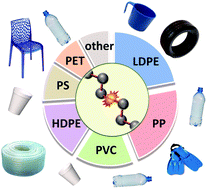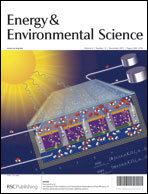Retrieving and converting energy from polymers: deployable technologies and emerging concepts
Abstract
Every year, several tens of million tonnes of polymers end up as waste. Contrary to popular belief and optimistic media stories of ever-improving recycling efforts, only a small fraction – indeed, a few percent – of this polymeric litter is actually being recycled and reused. In the U.S., some 3 million tonnes of plastics are recycled annually, yet over 28 million tonnes age unproductively – if the energy of this waste could be harnessed at a moderate 50% efficiency, the greater Chicago area would glow and spark almost all year round! Fortunately, significant progress is being made in technologies that aim at retrieving energy from waste polymers. On the large, often industrial, scales, polymers are being incinerated, pyrolized, and chemically degraded. Some of these technologies can produce viable fuels at costs as low as $0.75 per gallon, some five times smaller than what Mr Smith nowadays pays at the gas pump. There is also plenty of interesting, exploratory science done at smaller scales, where polymers are used in electrostatic or piezoelectric generators, or as materials converting mechanical to chemical energy. Several proof-of-concept devices have been shown to produce enough energy to power personal electronic devices or drive laboratory-scale chemical reactions. Together, the large- and small-scale technologies constitute a realistic strategy to retrieve a sizeable fraction of energy stored in polymers that would otherwise be only presenting a serious environmental concern.


 Please wait while we load your content...
Please wait while we load your content...